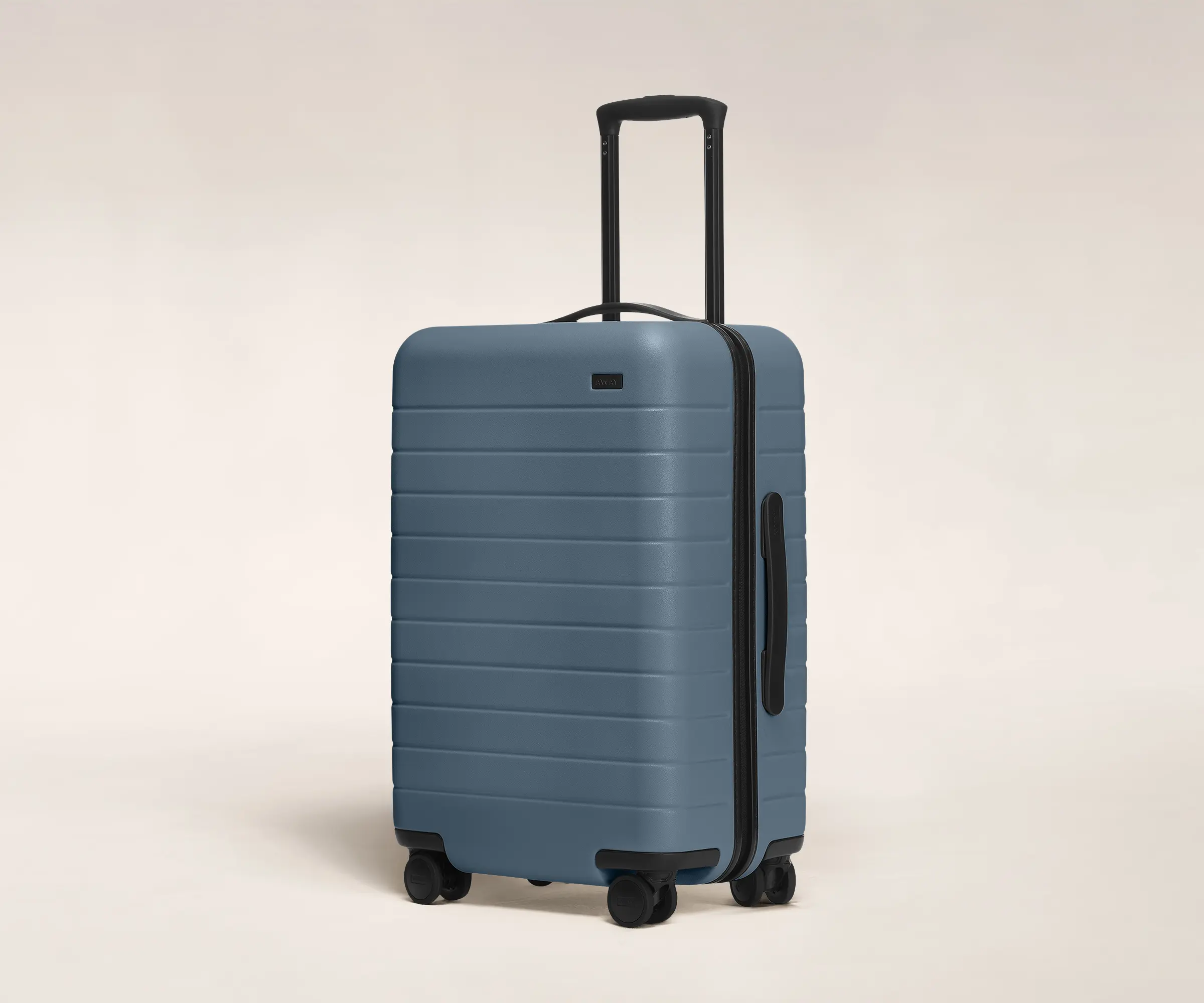If you browse a luggage website, you will find a large number of hard-side luggage, different sizes, different materials, and different prices.
Of course, the brand name's fame influences them a lot on their prices. , But how can we select the best luggage? I mean, perfect for our usage, not overpriced.
Some people conducted a survey to investigate the factors that influence U.S. consumers to purchase new luggage.

Apart from the first factor, which you can custom as you wish, all the following four factors are mostly decided by luggage materials.
Return back to the luggage website. There are five frequently used materials: ABS, PC, ABS+PC, PP, and rPET.
Come and see which suits you best.
Intro
5 Different Materials
Conclusion
Comparison
Here I make a comparison between the 5 different materials.

5 Different Materials
ABS
ABS, short for acrylonitrile Butadiene Styrene, is mixed of the three materials.
You can find this material almost everywhere, ranging from electronic products to baby toys. The reason lies in its cheap production costs.
When employed in luggage manufacture, ABS features cheapness and rigidness. By rigidness, I have to mention it does not equal durability.
From the picture, you can see granular dots around the lock, which makes the exterior surface unsmooth when touching.
Besides, ABS, as one of the plastics, fails to resist extreme temperatures, no matter high or low degrees. Due to its simple nature and construction, the ABS cover can easily be exposed to cracks.
In conclusion, ABS are:
competitive price
affordable mold charge
rigid
anti-scratch
resistant to high temperatures
ABS+PC
ABS+PC is more like an advanced version of ABS and PC.
Namely, it adds a layer of polycarbonate on the exterior, which highly reduces the chances of cracks. This material is a bit more rigid than pure polycarbonate, but it’s still much more flexible than regular ABS.
After the production of the main case, the exterior of the luggage would be covered with a protective film.
Generally, we will automatically leave a strip in the margin to help remove the protective film.
ABS/PC complex are:
affordable mold charge
less anti-scratch than ABS
multiple printing methods are available
PC
Different from ABS, PC is rather strong against cracks and impacts. It is used in so many things purely because of this toughness. From outdoor furniture to eyeglasses, you would be surprised how common the use of this material is.
More importantly, the PC is excellently resistant to UV, which helps maintain the color and confront high and low temperatures.
As a result. the high stability allows the PC luggage to be manufactured with complex designs and shapes.
So, PC are:
durable
anti-scratch
resistant to extreme temperatures
premium outlook
PP
Polypropylene has the lowest density of all commercial plastics. This makes it the lightest shell material per volume.
As for the weight of this luggage, we here conclude the chart. It shows that the weight differences between all luggage plastics are very minimal.
The heaviest material is only 12% heavier than the lightest one. So, I suggest the weight of luggage materials may not be of crucial concern.

This material is strong and flexible and does not fatigue easily. It is scratch resistant and can accommodate finishes ranging from a high polish to a rough texture.
The combination of polypropylene's strength, lightweight and abundant availability makes it an ideal material for fabricating hard shell suitcases.
For PP, they are:
super expensive mold charge
highly durable
anti-scratch
lightest of all
prominent lines
rPET
rPET, short for recycled polyethylene terephthalate, refers to any PET material from a recycled source rather than the original, unprocessed petrochemical feedstock.
To be simple, you can identify rPET as plastic bottles and food containers.
rPET, as an eco-friendly material, can reduce 21% of carbon dioxide emissions compared with its original material. I have talked about rPET before, more information can be found here.
Besides, the material can be customized into a large range of bags and luggage.
So, rPET is:
eco-friendly
metallic outlook
anti-scratch
non-resistant to high temperatures
Conclusion:
Apart from the five materials above, there are others, such as aluminum, nylon, polyester, leather, and so on.
I would not say there is the best material for everyone. What we can promise is only suitability. It's not merely about the price but functionality and project attribution.
For example, promotional projects and designated projects can never have the same working process.






















Comments